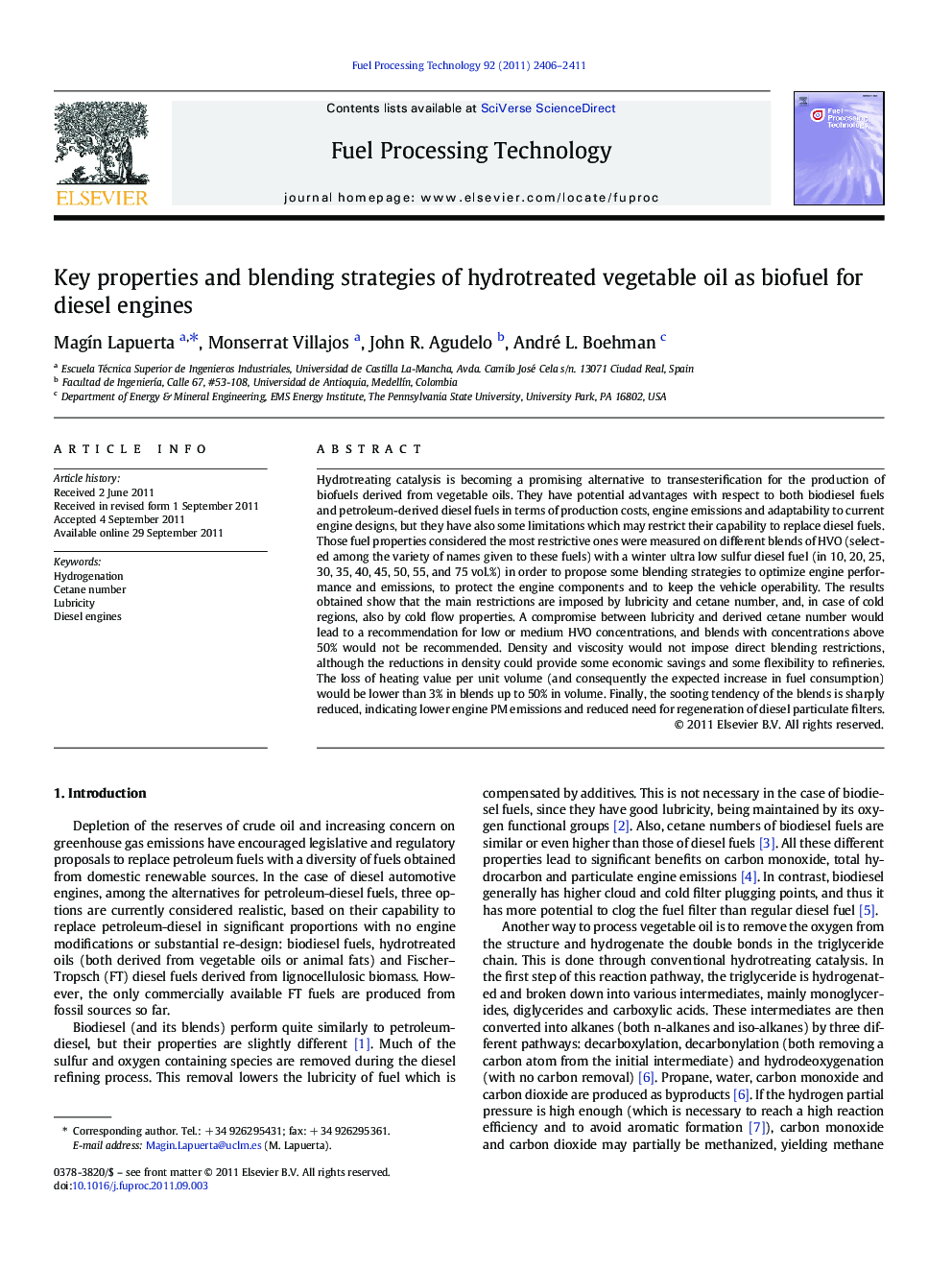| Article ID | Journal | Published Year | Pages | File Type |
|---|---|---|---|---|
| 210533 | Fuel Processing Technology | 2011 | 6 Pages |
Hydrotreating catalysis is becoming a promising alternative to transesterification for the production of biofuels derived from vegetable oils. They have potential advantages with respect to both biodiesel fuels and petroleum-derived diesel fuels in terms of production costs, engine emissions and adaptability to current engine designs, but they have also some limitations which may restrict their capability to replace diesel fuels. Those fuel properties considered the most restrictive ones were measured on different blends of HVO (selected among the variety of names given to these fuels) with a winter ultra low sulfur diesel fuel (in 10, 20, 25, 30, 35, 40, 45, 50, 55, and 75 vol.%) in order to propose some blending strategies to optimize engine performance and emissions, to protect the engine components and to keep the vehicle operability. The results obtained show that the main restrictions are imposed by lubricity and cetane number, and, in case of cold regions, also by cold flow properties. A compromise between lubricity and derived cetane number would lead to a recommendation for low or medium HVO concentrations, and blends with concentrations above 50% would not be recommended. Density and viscosity would not impose direct blending restrictions, although the reductions in density could provide some economic savings and some flexibility to refineries. The loss of heating value per unit volume (and consequently the expected increase in fuel consumption) would be lower than 3% in blends up to 50% in volume. Finally, the sooting tendency of the blends is sharply reduced, indicating lower engine PM emissions and reduced need for regeneration of diesel particulate filters.
► The main restrictions for HVO/diesel blending are imposed by lubricity and cetane number. ► A compromise between lubricity and cetane number would limit HVO content below 50%. ► Blending with HVO would not affect significantly the user economy. ► The sooting tendency is reduced as the HVO content in the blends is increased.
